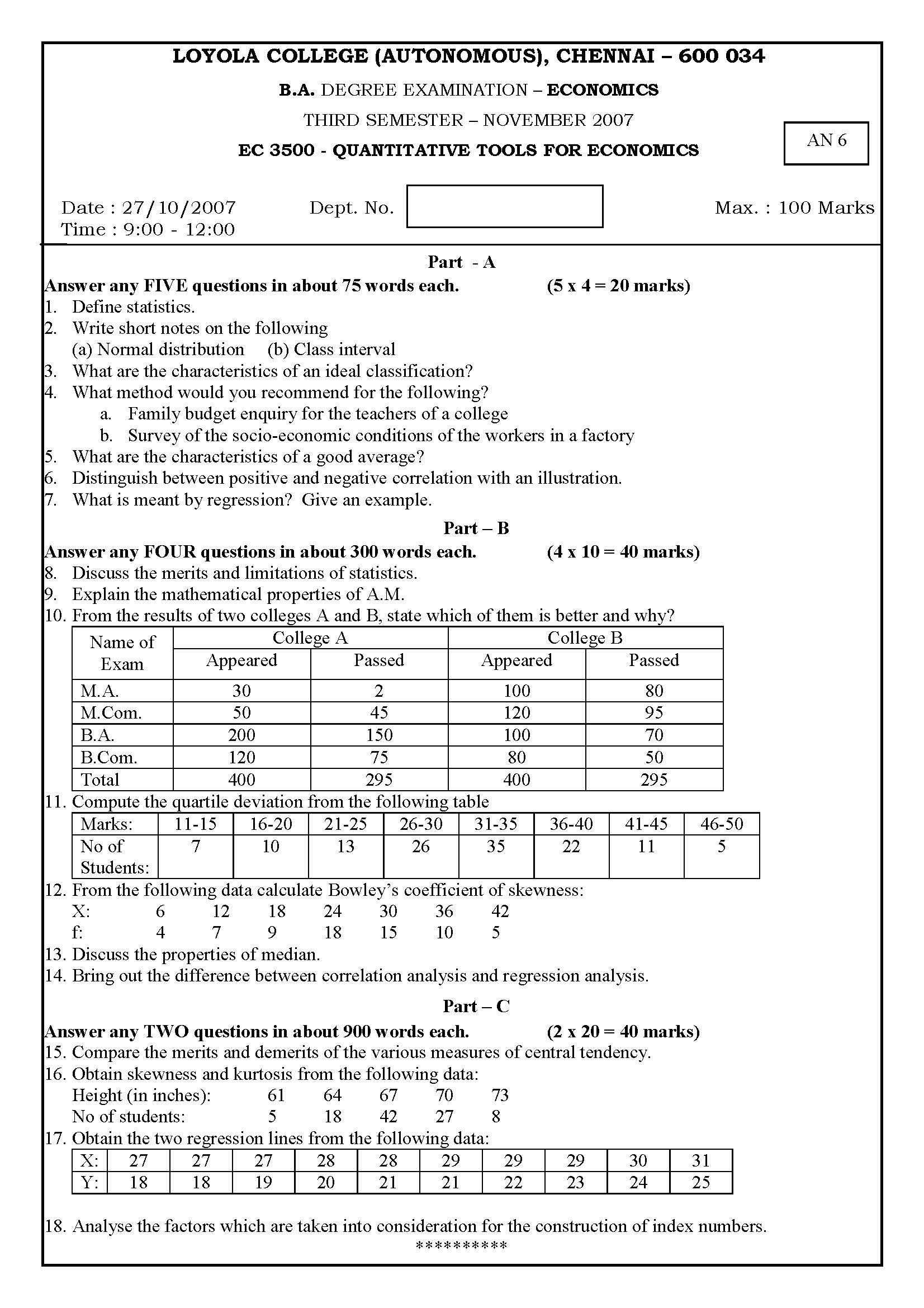LOYOLA COLLEGE (AUTONOMOUS), CHENNAI – 600 034 B.A. DEGREE EXAMINATION – ECONOMICS
|
THIRD SEMESTER – NOV 2006
EC 3500 – QUANTITATIVE TOOLS FOR ECONOMICS
(Also equivalent to ECO 502)
Date & Time : 02-11-2006/9.00-12.00 Dept. No. Max. : 100 Marks
Part – A
Answer any FIVE questions in about 75 words each. (5 x 4 = 20 marks)
- What do you mean by statistics?
- Write short notes on the following
(a) Histogram; (b) frequency curve
- What are the main objectives of classification of data?
- What do you understand by primary data? In what way is it superior to secondary data?
- What are the objectives of averages?
- What is meant by correlation?
- What do you understand by the term regression?
Part – B
Answer any FOUR questions in about 300 words each. (4 x 10 = 40 marks)
- Explain the functions of statistics.
- Draw the histogram of the frequency distribution of marks given below:
Marks(x): 10-15 15-20 20-30 30-40 40-50 50-57 75-100
Frequency(y): 4 12 20 18 14 25 10
- A candidate obtained the following percentages of marks in an examination: English 75; Statistics 60; Mathematics 59; Physics 55; Chemistry 63. Find the weighted mean if weights 2, 1, 3, 3 and 1 respectively are allocated to the subjects. Calculate the weighted mean and also the simple mean.
- Calculate the quartile deviations from the following data:
| Income per week | 25 | 26 | 27 | 28 | 29 | 30 | 31 | 32 | 33 | 34 | 35 |
| No of persons | 25 | 70 | 210 | 275 | 430 | 550 | 340 | 130 | 90 | 55 | 25 |
- From the following discrete data calculate Karl Pearson’s coefficient of skewness.
X: 6 12 18 24 30 36 42
f: 4 7 9 18 15 10 5
- Discuss the merits and demerits of arithmetic mean.
- Explain the method of least-squares.
Part – C
Answer any TWO questions in about 900 words each. (2 x 20 = 40 marks)
- Explain the different methods of collecting primary data.
- Obtain Skewness and Kurtosis of coefficients from the following data.
| X: | 0-10 | 10-20 | 20-30 | 30-40 | 40-50 | 50-60 | 60-70 |
| f: | 4 | 8 | 11 | 15 | 11 | 7 | 4 |
- Obtain the two regression equations from the following data:
| Hight(x): | 61 | 68 | 68 | 64 | 65 | 70 | 63 | 62 | 64 | 67 |
| Weight(Y): | 112 | 123 | 130 | 115 | 110 | 125 | 100 | 113 | 116 | 126 |
- Analyze the uses and importance of index numbers.
